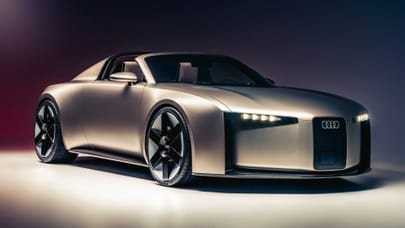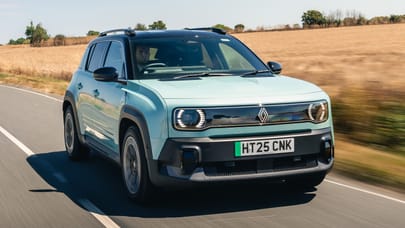
Hydrogen cars are definitely (maybe) still going to happen
People are still trying to make hydrogen work for cars. Here's how fuel cells still might make it
They’ve been a long time coming, but hydrogen-powered cars are definitely still on. Maybe. "Hydrogen is coming after everything else. Solar, wind, batteries; all went through a massive cost decline curve," insists Chris Jackson, founder of hydrogen solutions firm Protium. "The problem with [hydrogen] is everyone wants to jump to the end."
Feels like it's been that way... forever actually. How many false dawns and dead ends has hydrogen led us to over the years?
But speaking at a forum organised by BMW last week, the project managing chief for its hydrogen tech, Dr Jürgen Guldner, observed: "We need to get over those few first 10,000 units where economies of scale make sense, and then the cost curve will come down."
So here's a theory: the road to hydrogen cars is via trucks. Guldner points out that 12 per cent of HGV operators planning to introduce hydrogen vehicles within the next five years: doesn't seem like a lot, but that's because businesses are worried about infrastructure.
Jackson steps in: "Hydrogen infrastructure is more expensive because a 50kW EV charger services up to 10 cars a day, versus a hydrogen refuelling station doing 400 vehicles a day.
“That's why in Europe [the attitude is] ‘let's get the heavy-duty vehicles out first'. Create the demand, create the backbone. Then that creates confidence and certainty to bring in passenger vehicles."
Feels like we've had this chicken and egg debate a thousand times over, but despite the beleaguered progress of the tech since the 1966 Chevrolet Electrovan, people are still trying to make it work.
Hyundai’s got the next-gen Nexo coming later this year, and BMW’s iX5 pilot was so successful the German carmaker is readying a production fuel-cell electric vehicle (FCEV) by 2028 using Toyota technology.
According to Toyota, there are 75,000 fuel-cell vehicles (FCEVs) on the road globally, with the Mirai accounting for around 28,000 of those. The UK's contribution to that sum is 230 Mirais... and roughly 20 hydrogen buses in London. Don’t judge, eh?
But here's the scale of the problem: here in Blighty there are three publicly accessible car refuelling points, with a further three planned. And four publicly accessible bus refuelling points, with a further... two planned.
Top Gear
Newsletter
Thank you for subscribing to our newsletter. Look out for your regular round-up of news, reviews and offers in your inbox.
Get all the latest news, reviews and exclusives, direct to your inbox.
In total there are 16 hydrogen refuelling stations across the UK, and funded plans to build enough to enable north-to-south travel (roughly 65). Calculations suggest the UK would need around 1,300 to put every driver 30 minutes from one. So the gap is big. Really big.
Refuelling hubs can take one of two approaches; one where the hydrogen produced elsewhere arrives by tanker, the other where the hydrogen is produced on-site.
Jon Hunt, senior manager of Toyota’s Hydrogen Transformation division, says: "What we've learned is while it's very good [to produce on-site], it does need scale to make it economically viable. So it’s better to centralise large-scale production and look at the distribution routes."
Meanwhile hydrogen is being used in other places, powering sound systems at music festivals and lighting motorway towers – things which should help drive costs down. So going to see Oasis this summer is actually you doing your bit for the planet. "You gotta roll with it! You gotta take your time!"
Ahem. Add in fancy innovations like the portable hydrogen cartridges (pictured) that Toyota’s been working on, and some cars to actually run on the stuff, and the pipe dream might not be dead after all. Maybe.
Trending this week
- Car Review
BMW iX3









